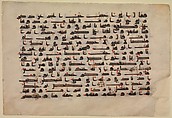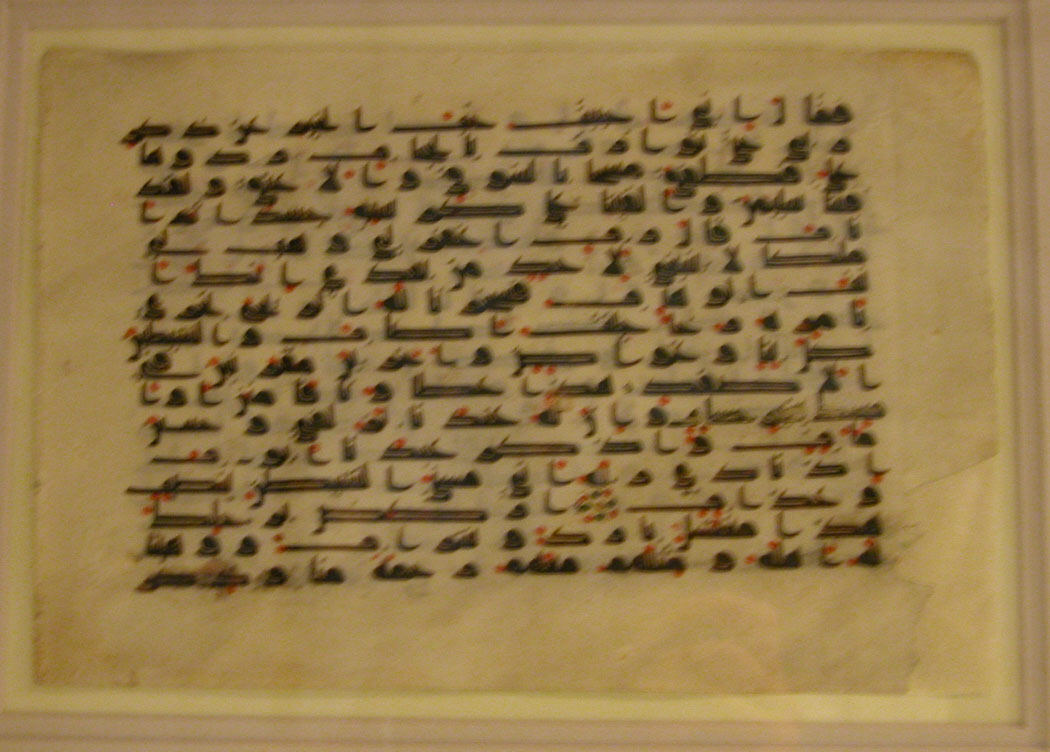Folio from a Qur'an Manuscript
Not on view
While the earliest surviving Qur’ans were copied in a tall, streamlined script known as hijazi on a vertical parchment support , such preferences were abandoned during the Umayyad period as scribes developed the horizontal format and kufic script of the kind seen in this folio. The wide, elongated calligraphy spreads out elegantly across the horizontally formatted parchment as scribes manipulate the width of individual letters to fill out lines. The earliest script lacked dots and signs indicating vowels and specific consonants, arguably because the words on the page functioned as a memory aide for a text that its reader already knew by heart. The shift away from this oral tradition is manifested in this folio, which includes colored dots and marks to help the reader follow the text properly.
Due to rights restrictions, this image cannot be enlarged, viewed at full screen, or downloaded.
This artwork is meant to be viewed from right to left. Scroll left to view more.



